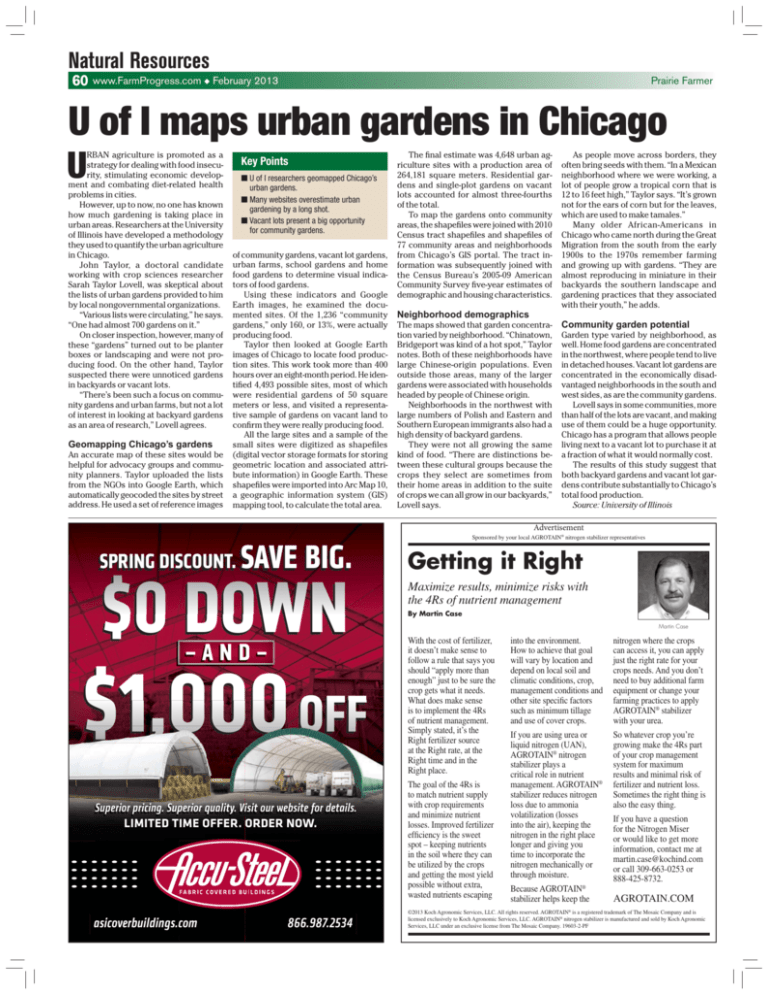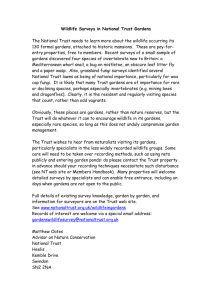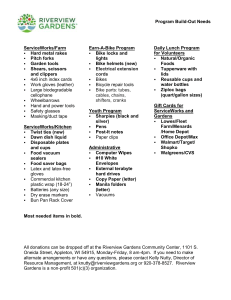
Natural Resources
60 www.FarmProgress.com ◆ February 2013
Prairie Farmer
U of I maps urban gardens in Chicago
U
RBAN agriculture is promoted as a
strategy for dealing with food insecurity, stimulating economic development and combating diet-related health
problems in cities.
However, up to now, no one has known
how much gardening is taking place in
urban areas. Researchers at the University
of Illinois have developed a methodology
they used to quantify the urban agriculture
in Chicago.
John Taylor, a doctoral candidate
working with crop sciences researcher
Sarah Taylor Lovell, was skeptical about
the lists of urban gardens provided to him
by local nongovernmental organizations.
“Various lists were circulating,” he says.
“One had almost 700 gardens on it.”
On closer inspection, however, many of
these “gardens” turned out to be planter
boxes or landscaping and were not producing food. On the other hand, Taylor
suspected there were unnoticed gardens
in backyards or vacant lots.
“There’s been such a focus on community gardens and urban farms, but not a lot
of interest in looking at backyard gardens
as an area of research,” Lovell agrees.
Geomapping Chicago’s gardens
An accurate map of these sites would be
helpful for advocacy groups and community planners. Taylor uploaded the lists
from the NGOs into Google Earth, which
automatically geocoded the sites by street
address. He used a set of reference images
Key Points
■ U of I researchers geomapped Chicago’s
urban gardens.
■ Many websites overestimate urban
gardening by a long shot.
■ Vacant lots present a big opportunity
for community gardens.
of community gardens, vacant lot gardens,
urban farms, school gardens and home
food gardens to determine visual indicators of food gardens.
Using these indicators and Google
Earth images, he examined the documented sites. Of the 1,236 “community
gardens,” only 160, or 13%, were actually
producing food.
Taylor then looked at Google Earth
images of Chicago to locate food production sites. This work took more than 400
hours over an eight-month period. He identified 4,493 possible sites, most of which
were residential gardens of 50 square
meters or less, and visited a representative sample of gardens on vacant land to
confirm they were really producing food.
All the large sites and a sample of the
small sites were digitized as shapefiles
(digital vector storage formats for storing
geometric location and associated attribute information) in Google Earth. These
shapefiles were imported into Arc Map 10,
a geographic information system (GIS)
mapping tool, to calculate the total area.
The final estimate was 4,648 urban agriculture sites with a production area of
264,181 square meters. Residential gardens and single-plot gardens on vacant
lots accounted for almost three-fourths
of the total.
To map the gardens onto community
areas, the shapefiles were joined with 2010
Census tract shapefiles and shapefiles of
77 community areas and neighborhoods
from Chicago’s GIS portal. The tract information was subsequently joined with
the Census Bureau’s 2005-09 American
Community Survey five-year estimates of
demographic and housing characteristics.
As people move across borders, they
often bring seeds with them. “In a Mexican
neighborhood where we were working, a
lot of people grow a tropical corn that is
12 to 16 feet high,” Taylor says. “It’s grown
not for the ears of corn but for the leaves,
which are used to make tamales.”
Many older African-Americans in
Chicago who came north during the Great
Migration from the south from the early
1900s to the 1970s remember farming
and growing up with gardens. “They are
almost reproducing in miniature in their
backyards the southern landscape and
gardening practices that they associated
with their youth,” he adds.
Neighborhood demographics
The maps showed that garden concentration varied by neighborhood. “Chinatown,
Bridgeport was kind of a hot spot,” Taylor
notes. Both of these neighborhoods have
large Chinese-origin populations. Even
outside those areas, many of the larger
gardens were associated with households
headed by people of Chinese origin.
Neighborhoods in the northwest with
large numbers of Polish and Eastern and
Southern European immigrants also had a
high density of backyard gardens.
They were not all growing the same
kind of food. “There are distinctions between these cultural groups because the
crops they select are sometimes from
their home areas in addition to the suite
of crops we can all grow in our backyards,”
Lovell says.
Community garden potential
Garden type varied by neighborhood, as
well. Home food gardens are concentrated
in the northwest, where people tend to live
in detached houses. Vacant lot gardens are
concentrated in the economically disadvantaged neighborhoods in the south and
west sides, as are the community gardens.
Lovell says in some communities, more
than half of the lots are vacant, and making
use of them could be a huge opportunity.
Chicago has a program that allows people
living next to a vacant lot to purchase it at
a fraction of what it would normally cost.
The results of this study suggest that
both backyard gardens and vacant lot gardens contribute substantially to Chicago’s
total food production.
Source: University of Illinois
Advertisement
SPRING DISCOUNT.
SAVE BIG.
$0 DOWN
$1,000 OFF
Superior pricing. Superior quality. Visit our website for details.
LIMITED TIME OFFER. ORDER NOW.
Sponsored by your local AGROTAIN® nitrogen stabilizer representatives
Getting it Right
Maximize results, minimize risks with
the 4Rs of nutrient management
By Martin Case
Martin Case
With the cost of fertilizer,
it doesn’t make sense to
follow a rule that says you
should “apply more than
enough” just to be sure the
crop gets what it needs.
What does make sense
is to implement the 4Rs
of nutrient management.
Simply stated, it’s the
Right fertilizer source
at the Right rate, at the
Right time and in the
Right place.
The goal of the 4Rs is
to match nutrient supply
with crop requirements
and minimize nutrient
losses. Improved fertilizer
efficiency is the sweet
spot – keeping nutrients
in the soil where they can
be utilized by the crops
and getting the most yield
possible without extra,
wasted nutrients escaping
into the environment.
How to achieve that goal
will vary by location and
depend on local soil and
climatic conditions, crop,
management conditions and
other site specific factors
such as minimum tillage
and use of cover crops.
nitrogen where the crops
can access it, you can apply
just the right rate for your
crops needs. And you don’t
need to buy additional farm
equipment or change your
farming practices to apply
AGROTAIN® stabilizer
with your urea.
If you are using urea or
liquid nitrogen (UAN),
AGROTAIN® nitrogen
stabilizer plays a
critical role in nutrient
management. AGROTAIN®
stabilizer reduces nitrogen
loss due to ammonia
volatilization (losses
into the air), keeping the
nitrogen in the right place
longer and giving you
time to incorporate the
nitrogen mechanically or
through moisture.
So whatever crop you’re
growing make the 4Rs part
of your crop management
system for maximum
results and minimal risk of
fertilizer and nutrient loss.
Sometimes the right thing is
also the easy thing.
Because AGROTAIN®
stabilizer helps keep the
®
asicoverbuildings.com
866.987.2534
If you have a question
for the Nitrogen Miser
or would like to get more
information, contact me at
martin.case@kochind.com
or call 309-663-0253 or
888-425-8732.
AGROTAIN.COM
©2013 Koch Agronomic Services, LLC. All rights reserved. AGROTAIN is a registered trademark of The Mosaic Company and is
licensed exclusively to Koch Agronomic Services, LLC. AGROTAIN® nitrogen stabilizer is manufactured and sold by Koch Agronomic
Services, LLC under an exclusive license from The Mosaic Company. 19603-2-PF





